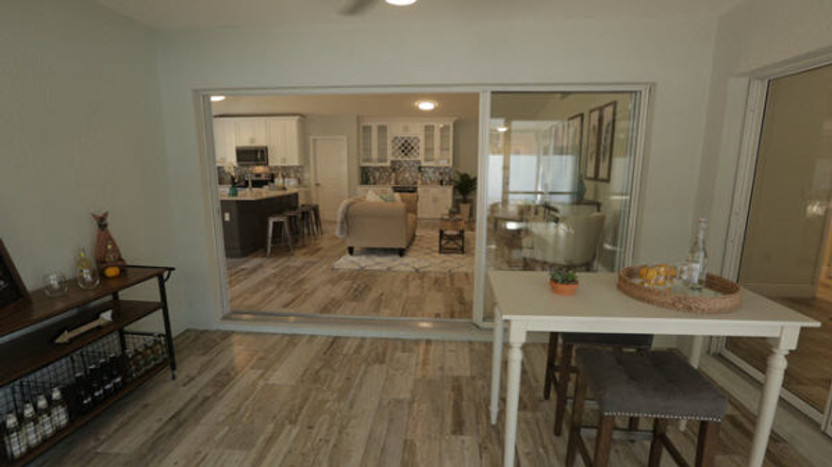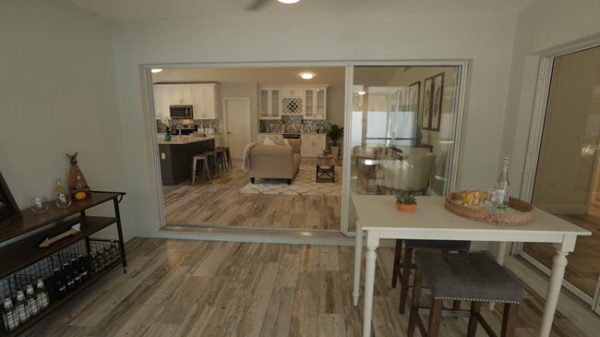Faux Wood Tile Sophistication
Posted by Kate Spencer on Aug 22nd 2019
Fake and faux are far apart. Fake is meant to deceive, but faux is intended as a tribute or a toast to something great or beautiful as in the case of faux wood tile used on floors as well as walls.
This image below is from the Tile Outlets of America men's bathroom in the Sarasota, FL store where we installed faux wood tile on the walls. It's a great look! (Stop by to see the full effect and let me know what you think.)
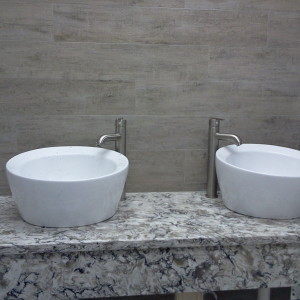
By the way, you'll find faux wood tile also commonly referred to as wood look tile.
As a testament to how strong the wood look tile trend is, realize that we originally published this article in March of 2014. It's definitely a sophisticated look that works with every design style because it's so versatile.
Faux Wood Tile Leads Hot New Trends in Tile for your Home
Faux wood tile is one of the hottest trends in home remodeling and home decorating.
Paying tribute to beautiful hardwood flooring, faux wood tile is a ceramic or porcelain tile that combines the rich, textured finishes and warmth of real wood with the durability, functionality and design flexibility of tile. Moreover, it costs a fraction of real hardwood flooring.
This is a practical use tile. You can use faux wood tile in parts of the home where moisture and water make real wood impractical, such as bathrooms, kitchens, and foyers. Even my gym has a wood look tile floor throughout.
>> See Wood Plank Tiles: The Hottest Floors in the Market
Porcelain vs. Ceramic Wood Plank Tiles
If you're wondering what's the difference between porcelain and ceramic wood plank tiles, here's a quick explanation.
Ceramic and porcelain tile are both made from clay which is a mixture of natural materials such as quartz, metal, and sand along with water. Once the tiles are formed, they are fired to high temperatures and, in some cases, their surfaces are glazed.
The only difference between porcelain tile and regular ceramic tile is that the clay used in porcelain tile is more highly refined and purified. Consequently, porcelain tile is denser and more durable than a standard ceramic tile.
>> See How Solid Is Your Porcelain vs. Ceramic Tile Knowledge?
Wood Look Tile for a Range of Colors and Textures
Most wood look tiles are created with inkjet technology which creates a surface pattern that imitates the look of real wood - from traditional oak patterns to reclaimed wood patterns - in a range of colors and finishes.
>> See How Inkjet Technology Has Transformed Ceramic and Porcelain Tile
Get the Look and Feel of Reclaimed Wood
Homeowners love the look and feel of reclaimed wood - like the wood from an old barn or wooden ship or even antique furniture. But reclaimed wood can be quite expensive. Now, you can add that reclaimed wood style with wall tiles made of ceramic which offer a natural, authentic weathered look.
An Abundance of Faux Wood Tile Finishes
Designers and homeowners love the abundance of available finishes in faux wood tile.
These range from natural, earthy tones to colors that many homeowners would never dream of staining in hardwoods, such washed-out whites and light greys - which are some of the more popular colors. These lighter colors have become increasingly popular in contemporary homes with open, light-filled spaces that bring out the tile’s visual wood-grain texture.
The image below of the display from the Tile Outlets store in Fort Myers gives you a good feel for the wide range of looks and colors available in wood look tile planks.
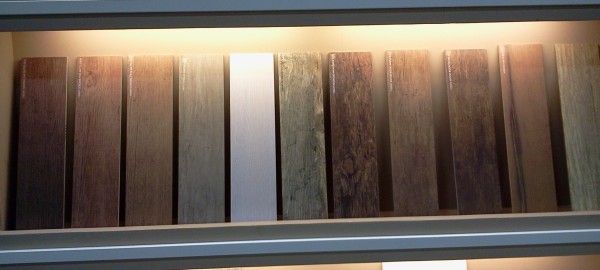
Creating Patterns with Faux Wood Tile
Be sure to get creative with patterns! You can lay wood-look tile with a herringbone effect and also a plank effect as opposed to the simple straight lay pattern where the grout lines all line up.
A good way to determine which look you prefer is to "dry" layout one box of faux wood tile planks on the floor before installing any of it.
>> See Consider a Mockup for your Tile Installation Project
Follow Manufacturer's Instructions for Patterns
Be sure to read the manufacturer's instructions on the box for information about the necessary offset to create the pattern. You shouldn't set most planks at a 50% or at half of the tile's length. 25% to 30% of the length is often the recommended limit for a staggered pattern.
If you're wondering why the offset matters, it's because it will affect the integrity of your tile installation. Following the recommended installation guidelines will prevent the tiles from having lippage which can occur with an offset greater than 25% to 33%. (This is of particular concern with larger tiles which generally have some minimal warpage.)
>> See Managing Lippage: Why Offsets Matter When Installing Tile
Wood Tile Plank Sizes
The most common size for wood tile planks is 6x24. However, widths and lengths are getting larger as faux wood tile planks are becoming more and more popular.
- You can now increasingly find wood look tile planks in lengths of 36 and even 48 inches.
- Although 6" wide planks are most common, anywhere from 4” to 8” wide plank sizes are popular. Some wood tile plank series include multiple sizes in one packaging to better create that look of a real wood floor.
>> See Learn About the Range of Wood Plank Tile Sizes at Tile Outlets of America
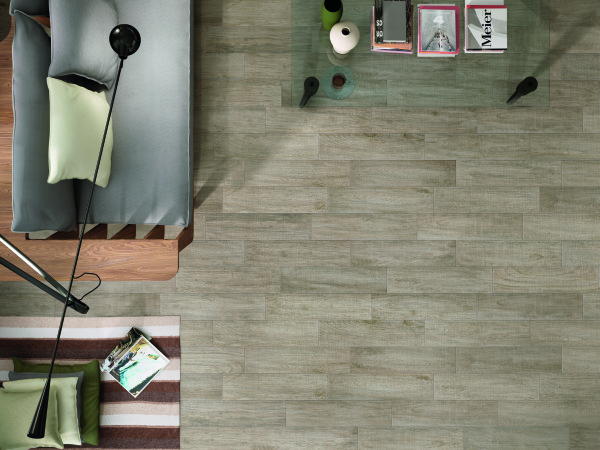
The image above shows you Vivaldi Winter porcelain tile.
Intrigued with Faux Wood Tile?
If you hadn't considered a faux wood tile for your home, I hope you will now. Come check out the selections available in all three Tile Outlets locations where you can take home a wood-look tile plank sample to see if it gives you the desired feel and look of wood in your home.
>> Check out Kate's Wood Plank Tile Floor and Wall Guide
Don't be afraid to put tile wood planks on the walls! It's a great look as a backsplash or as a wall accent. After all, tiles aren't just intended to be walked on, so enjoy their looks at eye level, too.
Let me know if you have any comments or questions about faux wood tile.
Thanks for visiting Kate's Corner!
~ Kate
Note: We originally published this article on March 13, 2014, and have updated it.


